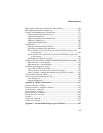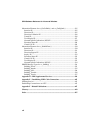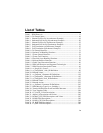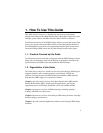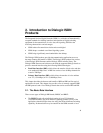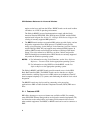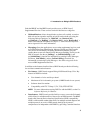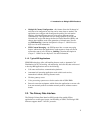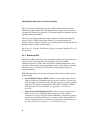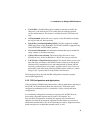
3
2. Introduction to Dialogic ISDN
Products
The Integrated Services Digital Network (ISDN) is a collection of internationally
accepted standards for defining interfaces and operation of digital switching
equipment for the transmission of voice, data, and signaling. ISDN has the
following characteristics and advantages:
• ISDN makes all transmission circuits end-to-end digital.
• ISDN adopts a standard out-of-band signaling system.
• ISDN brings significantly more bandwidth to the desktop.
The Dialogic ISDN products provide telecommunication applications access to
the many features and benefits of ISDN. The Dialogic ISDN product line consists
of the Dialogic ISDN firmware and the Dialogic ISDN software library. The
Dialogic ISDN firmware and software work with the supported Dialogic boards to
provide a network interface using the following ISDN technologies:
• Basic Rate Interface (BRI), which allows the transfer of both voice and data
over standard 64 Kbps lines. A BRI line consists of two 64 Kbps channels for
a total of 128 Kbps.
• Primary Rate Interface (PRI), which allows the transfer of voice and data
over T-1 (1.544 Mbps) or E-1 (2.048 Mbps) lines.
This chapter describes the features and benefits of BRI and PRI and lists typical
applications for each. This chapter also provides a list of currently supported BRI
and PRI protocols and a list of Dialogic boards that can be used for BRI and PRI.
2.1. The Basic Rate Interface
There are two types of Dialogic BRI boards, BRI/SC and BRI/2:
• The BRI/SC boards allow individual routing of up to 32 B channels
(voice/data channels) and 16 D channels (signaling channels) to any of the
application-selectable SCbus time slots using the SCbus distributed switching
capability. B channel traffic may be routed from the ISDN network or local



